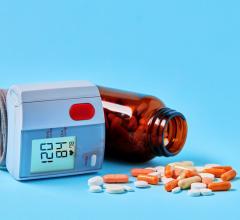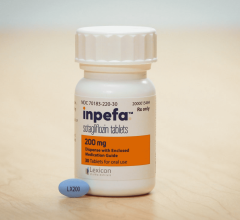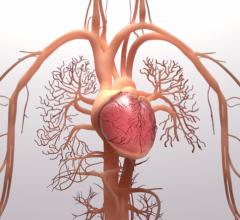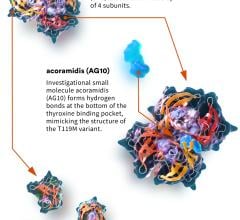Whether you are in a hectic ER, ICU, OR, cardiology or other diagnostic department, or overseeing an outpatient clinic, steps always need to be taken to ensure that critical storage requirements for drugs are met. Protocols usually exist for a daily check and logging of refrigerator or freezer storage area temperatures by nursing staff. In fact, JCAHO EC.6.10 requires temperature logs for refrigerators and freezers used for medication storage, as well as processes to maintain and monitor equipment performance. Where regulations begin liability concerns continue. In today’s litigious world, no medical facility can afford to have lax practices that compromise drug quality. The most important matter is the need to protect patients from drugs that have lost potency from inadequate storage methods.
In today’s fast-paced medical environments such routine protocols may not be adhered to as strictly as one would like. Even if a once-a-day logging of drug storage temperatures is done without fail, there are many, often hidden, challenges to safeguarding drug storage conditions that are not widely recognized and that the once-a-day or twice-a-day temperature logging often fails to detect. This is why most leading medical facilities now use continuous, calibrated and certified recording thermometers (a.k.a. temperature chart recorders) to safeguard their drug inventory.
Defrost cycles in many refrigerators and freezers are an example. Some of the refrigerators/freezers used in medical facilities are so-called frost-free models. They use thermostats to detect temperatures and rotate between cooling and heating in order to melt accumulated frost in freezers. It is erroneous to think that the temperature variations involved in defrost cycles do not necessarily affect critical drug storage conditions. Moreover, it is also mistaken to assume that over the life of a refrigerator/freezer unit the thermostats and other mechanisms that control the defrost cycle will continue to function the same way as when the refrigerator/freezer was new.
Out-of-range temperatures during a defrost cycle documented by a continuous recording thermometer (temperature chart recorder) are missed by a daily manual logging of freezer temperatures. The manual logging method can miss the periodic defrost cycle entirely and out-of-range storage conditions remain undetected.
Outpatient facilities or departments that are closed on Sundays means no manual logging of temperatures it taken on these days. This can mean logs may miss periods when a refrigerator/freezer unit is unplugged by a cleaning crew. Many outpatient clinics without sophisticated backup generators for continuous electricity also need to contend with the periodic power outages.
If out-of-range conditions are detected by spot checks with a thermometer or a min/max thermometer, there is no way to determine how long temperatures remained out of acceptable storage ranges. That means that expensive drug inventory would need to be destroyed and replaced. A continuous recording thermometer (temperature chart recorder) is the only type of monitoring instrument that enables staff to document out-of-range temperatures and how long these temperatures veered from acceptable ranges and then check with drug manufacturers to determine if these critical conditions where reached. Consider the relatively minor cost for temperature chart recorders (in the range of a few hundred dollars) as compared to the skyrocketing costs of drug inventory (even approaching the six-figure range for some drug storage refrigerator/freezers). It becomes apparent why manual temperature logging is for all practical purposes an obsolete relic of a bygone age when drug costs were not so high and storage conditions may not have been as critical.
In sourcing continuous recording thermometers, there are certain basics. First, find a recording instrument that is designed to monitor the temperature ranges in which drugs are actually stored. Temperature chart recorders can be found that monitor various ranges and an instrument designed for one range cannot be used in another temperature range. Most freezers/refrigerators used for drug storage are best served by an instrument that is designed for their specific operating range.
Second, one needs to ensure that the continuous recording thermometer (temperature chart recorder) has been properly certified and calibrated. NIST (National Institute of Standards and Technology) certifications mean that the calibration of the instrument can be traced back to the official body that defines that temperature standard. A NIST-certified calibration will include a model number and serial number identifying the chart recorder, the issue date for the certification, a statement of environmental conditions during certification, an identification of calibration standards and certification dates, and the signature of the certifying technician. If there are ever any liability matters that involve proof of proper drug storage temperatures, this type of documentation can become all-important.
Third, one needs to ensure that the continuous recording thermometers have the ease-of-use features that will ensure their use in a hectic environment. Are the charts displaying recorded temperatures easy to read? Is it cord-free, portable and with a long-life battery that requires minimal maintenance? Is it compact enough to easily fit into available spaces in refrigerators and freezers without crowding out drug inventory? Does it feature a digital display of current conditions or min/max temperatures, in addition to the continuous chart, for quick reference during spot checks?
Once the proper temperature recorder has been acquired, operating procedures should include the following:
1) Place the recording thermometer in a central location of the refrigerator or freezer that it is monitoring. Do not put it close to the front or back or bottom of the refrigerator or freezer, or in plastic containers, doors or crispers. .
2) Twice daily spot checks and logs of refrigerator and freezer temperatures should remain standard operating procedures.
3) Store temperature charts and logs for a minimum of three years.
4) Take action immediately if temperatures are out of range. This would include both fixing malfunctioning refrigerators and freezers when necessary AND contacting drug manufacturers for clarification on whether the extent and duration of out-of-range temperature conditions necessitates replacing inventory.
5) Establish maintenance procedures to change charts on chart recorders at least weekly and to change batteries at least once a year.
6) Re-calibrate recording thermometers as required and ensure that the calibration service is fully qualified to calibrate the instrument. Best-practice calibrations usually involve returning the instrument to the manufacturer for calibration, as secondary sources do not have access to proprietary software codes that are needed for accurate calibrations.
In summary, because drugs are expensive and compromised drug quality is a patient safety concern, it makes sense to put temperature chart recorders to work. It doesn’t require significant time, funds or energy to do so, but simply recognition of what is at stake if half-measures are used.
For more information: www.dicksondata.com
October 2008


 July 10, 2024
July 10, 2024 








